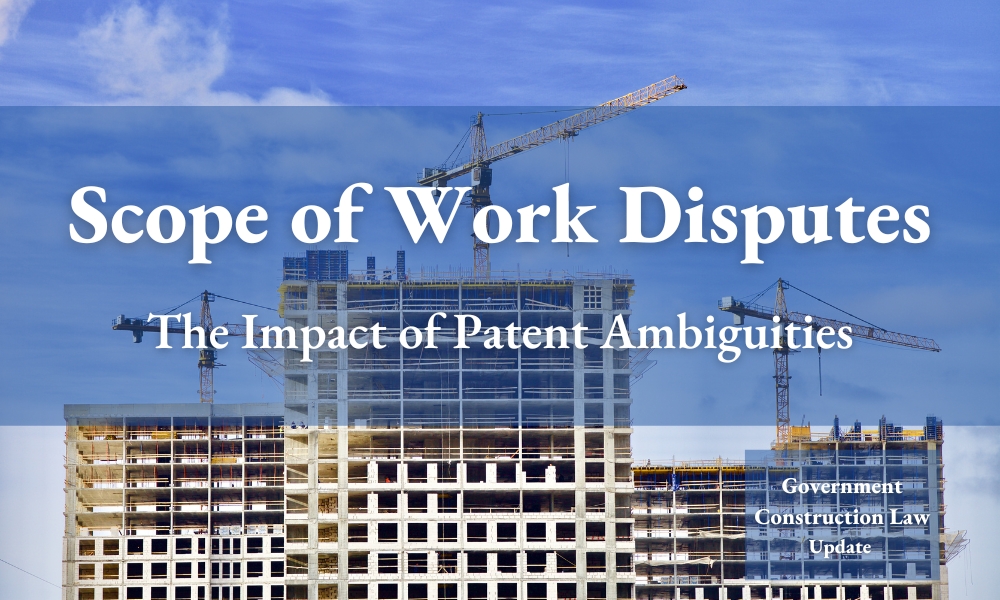Disputes regarding a contractor’s scope of work are common. Frequently, there are times when a contract or solicitation is unclear as to whether a certain item of work is within a contractor’s scope. (Click here for the six most common contractor claims, which includes change-in-scope claims.)
In federal government contracts, if a contract is ambiguous as to whether a contractor must perform a specific item of work, the issue may turn on whether it was a patent or latent ambiguity. A patent ambiguity is one that is readily apparent or obvious. In contrast, a latent ambiguity is one that is hidden or could not be discovered through the exercise of reasonable care.
The distinction is important because if an ambiguity as to whether a contractor has to perform a specific item of work is patent or obvious, the contractor has an affirmative duty to seek clarification before submitting its proposal. If the contractor fails to seek clarification, the ambiguity must be construed against the contractor.Continue Reading Change-in-Scope Claims: Patent vs. Latent Ambiguities

